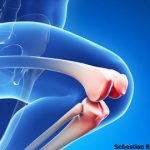(Reuters Health)—Middle-aged and older adults with torn cartilage or painful arthritis in their knee are not likely to benefit from arthroscopic surgery, and could be harmed by it, a review of past studies hints.
Researchers reviewed nine previous studies with a combined 1,270 patients and found the surgery no better than other options like exercise for improving physical function, and only temporarily more effective at easing knee pain.
“Patients and doctors should seriously consider if this treatment is the right choice given that only a short-term marginal benefit can be expected and the procedure comes with risk of serious complications,” lead study author Jonas Thorlund, a sports science and biomechanics researcher at the University of Southern Denmark, said by email.
Worldwide, more than 4 million people undergo arthroscopic knee surgery each year, according to the American Orthopedic Society for Sports Medicine. While it’s minimally invasive, it’s not risk-free.
Thorlund and colleagues reviewed previous research comparing patients receiving arthroscopic surgeries to remove damaged tissue or torn meniscus cartilage to control groups of people receiving interventions ranging from exercise to placebo surgery.
Across all the studies reviewed, the average age of patients ranged from about 50 to 63 years old. After surgery or the alternative treatment, follow-up in the studies ranged from three to 24 months.
For pain relief, researchers found a small, but statistically significant benefit from knee surgery after three months and six months, but not later, they report in the BMJ, online June 16.
Over the time periods measured in the studies reviewed, there was no difference in physical function after surgical or nonsurgical interventions.
The most commonly reported side effect was deep venous thrombosis, which happened in about 4 patients out of every 1,000. Other serious side effects were infection, pulmonary embolisms and death.
Many of the studies reviewed didn’t compare people randomly assigned either to surgery or another option, making it hard to compare the safety of different alternatives, the authors acknowledge.
In addition, the exercise therapy component in some studies reviewed wasn’t enough activity or was done in addition to surgery, making it difficult to assess the benefit of physical therapy to address knee problems, they note.
Even so, the study findings add to a growing body of evidence that may be approaching a tipping point against arthroscopic knee surgery for pain, Andy Carr, director of the Botnar Research Center at the Oxford University Institute of Musculoskeletal Sciences, writes in an editorial accompanying the study.
“It is difficult to support or justify a procedure with the potential for serious harm, even if it is rare, when that procedure offers patients no more benefit than placebo,” Carr said by email.


